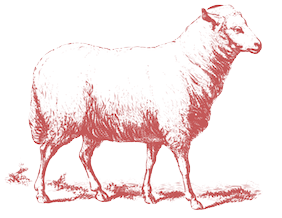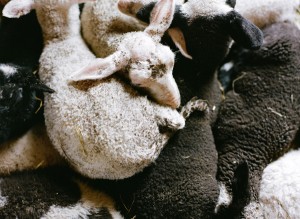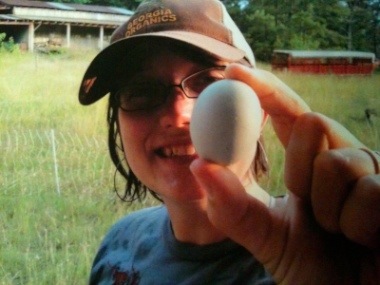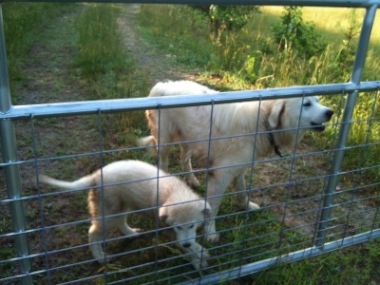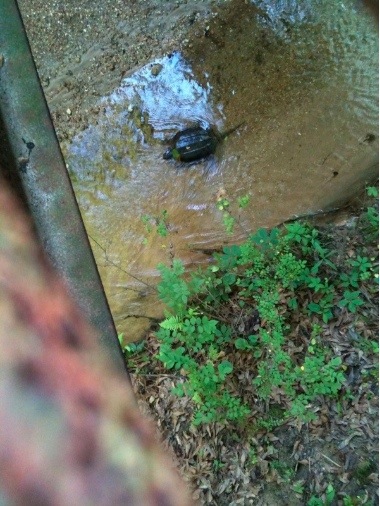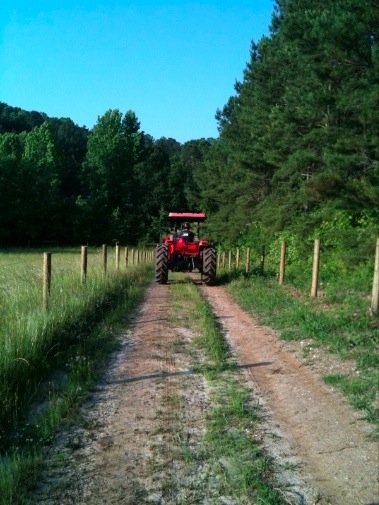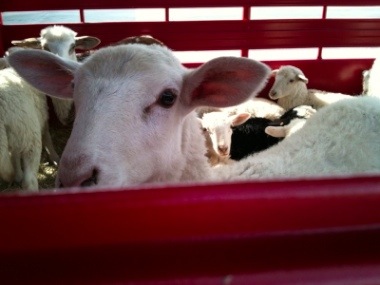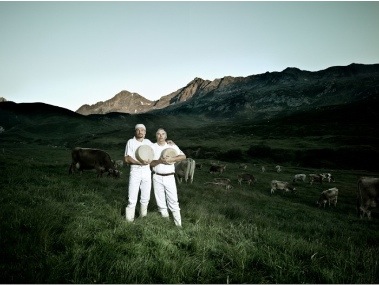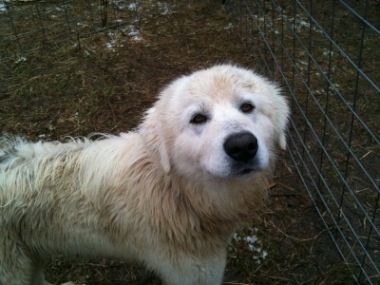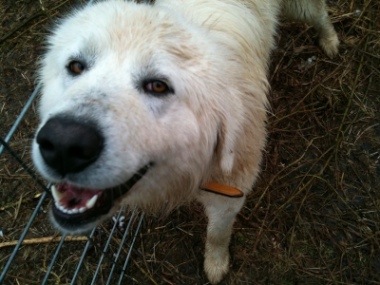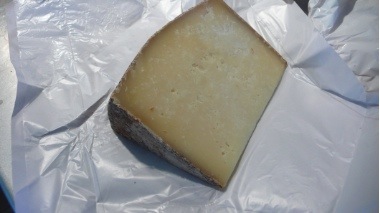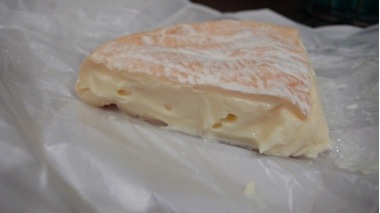This morning I had the great pleasure and honor to be invited to speak at the Interfaith Gathering that takes place in my community on Sunday mornings. The group is a non-denominational, inclusive space for meditation and conversation on spiritual matters. I was asked to speak about the spirituality of farming and to tell a bit of the story of how I came to farming. We had a lovely time and a lively, engaging discussion. It was a real treat that reminded me of how much I love living here. Below is what I read before the group this morning in order to generate conversation. Enjoy.
* * * * *
How I came to farm is as winding and complex as a life. I wasn't searching for it; there was no method. There was no one influence, no one “ah ha,” no thought or conscious realization. It was just a thing that happened, that felt right, and that made sense. If I could pinpoint a moment, I might say it was the asparagus that in the back yard of my childhood home and the fact that I was stunned to realize that not everyone knew what the spindly shoots looked like coming up out of the ground. Maybe it was later, when my mother sat in bed with me and read aloud Laura Ingles Wilder’s Farmer Boy. So great was my childhood enthusiasm for the food in that book that the yellowed paperback still bears a 6-year old’s teethmarks on the corners of certain pages describing the simple and sumptuous farm meals Alonzo Wilder grew up with. Perhaps it was the plain fact that my mother always seemed happiest either in the garden (in her old, white blouse so worn it has the texture of tissue) or in the kitchen (which smelled of garlic and never saw a can of store-bought tomato sauce). There was something about big suppers like Thanksgiving and Christmas when the table would fall silent at my mother’s cooking and all you could hear was the scraping of forks and the occasional “mmmm… ohh…mmmmm.” I knew, no, I didn’t know, I felt, I felt the love and nourishment of that food and I saw that others could feel it too. I felt that somehow I wanted to be the person who could make a crowd of people around a table stop, become calm, and give attention to their food. I wanted them to feel the nourishment and love it transferred to them and I wanted to be its cause.
This love of food and feeding people kept coming back over and over again. One of my college entrance essays was all about my relationship with food and how, like Eudora Welty’s magnificent Phoenix Jackson in A Worn Path is sustained and able to continue on her journey just by the vision of a piece of marble cake. In college, I would take the train to the Union Square Greenmarket every Saturday, lugging grapes, cheese, and lettuces in my bag as I wandered through the Met, carefully cradling precious eggs up and down stairs and into crowded subway cars. My freshman year I abandoned the cafeteria and set up an illegal hot plate in my dorm where I could make Fettuchine Alfredo or Chinese hot pots and share them with my dorm-mates. By my sophomore year I could make puff pastry in a dorm, a feat I would challenge anyone to surpass.
But the question remains: what is it about food that has this hold on me, that has this hold on all of us? Maybe not everyone is moved to tears by a simple plate of sliced tomatoes like I am, but everyone, everyone has experienced the pleasure of eating. So what is it? Sure, biology plays an obvious roll, but to say that we eat only because it is a biological imperative is about as true as saying we have sex only to reproduce. The fact is we don’t. We don’t do things only because we must; if we did, having sex would be as equally appealing as doing laundry or paying bills: just one more thing to get you through the day. Biology is just one part of a larger whole, that whole being the uniquely human experience of pleasure: the force that generates wanting, that generates desire. The fact is that for a biological imperative like food or sex to happen successfully and sustainably over time, the reality that it is needed is less important than the fact that it must also be wanted.
The link between desire and food is hard to miss. But food, desire, and God is a less-likely combination. In a world of boxed mashed potatoes and pre-packaged tenderloin, the closest one might get to God in the grocery store is the occasional kosher label. However, the roots of western civilization are steeped in the connection between the three. The most obvious example can be found in the biblical Canticle, the Song of Songs, which can be interpreted as a metaphorical description of God's relationship with humanity. The speaker writes of his beloved,
Your stature resembles the palm,
your breasts the clusters.
Methinks I'll climb the palm,
I'll grasp its branches.
Let your breasts be like grape clusters,
your scent like apples,
your palate like the best wine…
The fact that in the Catholic tradition, the Christian rite of communion involves the transformation of food, typically bread and wine, into the actual body and blood of Christ, which is then eaten together among the parishioners is perhaps the best example. Gross it may be, but erotic, it certainly is: it is a means of finding closeness with the divine where there is an intimate exchange that transpires by putting the divine body inside mortal body. Though I was not raised in a particularly religious home, and certainly not a Catholic one, I was always drawn to study religion and religious practices. As my religious and spiritual understandings grew, somewhere along the line I had to ask myself, what, fundamentally, is the difference between a bit of bread imbued with the life force of God and any other food. If God created all that is and is ultimately all that there is, then surely it would follow that when we eat, we are bringing the divine into our bodies, allowing us to be nourished and to create and sustain life.There is a longer story here, one that can trace my relationship with the divine from a child-like enthrallment to an adolescent agnosticism, to an ever-growing felt knowledge, that there is some spirit in the wind that moves and binds, that creates, that nourishes that my heart sings to think upon. It is a particular voice I find in the Song of Songs. It is the thing that makes me want: the great, internal generator of desire that points to something beyond mere biology. It makes me want to want. It makes me relish biting into a summer peach and its explosion of juice all over my face, it makes me run for my camera when I slice into beets in order to preserve the sight of their red veins variegating the root, it is the thing that makes me cry with pleasure when I am presented with slices of fresh summer tomatoes. It makes me want to get closer to what I eat.
Food writer Michael Ableman, whom I had the pleasure of hearing speak at the Carolina Farm Stewardship Conference a few years ago, put it best. He described the foods growing on farms he visited for his most recent book: clusters of dewy cherries heavy on branches; great baskets of corn and rye you could stick your hand into down to your elbow to feel the cool grains; and the musk of goats, heavy with their babies and taut sacks of milk. The reason, he says, people love farmers and farming, that folks return to farmers markets, want to visit our farms, and want to get to know us is that : "they all want what we've got." There is an intimacy farmers have with creation and the act of creating. At the Thanksgiving table of my childhood, I found that what I wanted was to create and share in pleasure. The pleasure of eating made me, my mom, my family happy; it made us feel together, it made me feel close to them. It was our communion. I found the same feeling had been enhanced 10-fold selling lamb, beef, and pork at a farmer's market in Asheville. People held my hand and thanked me for what I was doing. They chatted with me, telling me their stories, and asking me about anything and everything going on on the farm. With hundreds of people clamoring to be near me and what I did with my life every week, I thought to myself, this is the closest I will ever be to being a rock star, isn't it?
This feeling of intimate unity with the land and food is confirmed by some of the greatest farmers in the world. Wendell Berry writes,
Sowing the seed,
my hand is one with the earth.
Wanting the seed to grow,
my mind is one with the light.
Hoeing the crop,
my hands are one with the rain,
Having cared for the plants,
my mind is one with the air.
Hungry and trusting,
my mind is one with the earth.
Eating the fruit,
my body is one with the earth.
The great farmer Masonobu Fukuoka likens farming to a perfect marriage, a unity between a human and the land that is "not bestowed, not received; the perfect pair comes into existence of itself." Of course, not all farming is like this. To continue the marriage analogy, most modern agriculture is a child-bride, married against her will, and repeatedly raped by her husband. The great monocultures of the midwest deplete, poison, and abuse. The way we eat these foods follows suit. These foods are high in calories, but devoid of nutrition, leading to disease. More disturbing still, I am concerned that our wanting to eat, the thing that has sustained human existence for a millennia, is declining. Studies find families don't eat together. Indeed, a family of four may eat four different meals, in four different rooms of the house, at four different times. An increasingly large percentage of meals are eaten in the car. Studies also find that most people spend approximately 10 minutes or fewer eating a meal. We are eating as if it is something we must do, not as if it is something we want to do. Worse still, food is avoided through an increased focus on weight loss, which exacerbates the problem by encouraging us to eat scientifically over pleasurably. And if eating isn't a "chore" for some, than it is something done obsessively, as if we are trying to reconnect to the land and each other over and over and over again, to no avail but more illness. As the land has been abused and neglected, our wanting has become warped.
As I learned about these abuses and their affects, I became more and more concerned with not just being able to cook a good meal, but knowing whether or not the food I was handling and preparing to put into my body and share among my friends was the product of creation or a contributor to destruction. Growing up with with my abiding love of food also gave me a sense of ethics about eating. My father kept kosher and insisted we keep a kosher house and that I be raised on a kosher diet. My childhood eating habits were infused with a sense of right and wrong eating, especially when it came to meat. Whenever we ate out, I was an automatic vegetarian, since very little restaurant food is kosher. I hated him for it, mostly because a bacon cheeseburger looked and smelled to be about the best food on the planet. I craved getting to explore mixes of foods and flavors that were “off-limits.” When my first grade teacher made us Ritz crackers with melted cheese and slices of hot dog on top, I neglected to tell her I wasn’t allowed. I learned that transgression can be downright blissful. In retrospect, however, I am grateful. This atmosphere instilled in me that there is right and wrong eating. My whole life I scanned menus, looking for the one or two things I could eat, but as I left childhood and started to make my own decisions, I started scanning menus, ingredients lists, and markets for my own reasons. I was looking for the foods that weren't tainted, for a communion that didn't have to become sacred by the prayer of a rabbi or priest, but that really, actually was.
As I looked for these foods, I began to learn about how they were grown and was daunted. In the maze of information about organic and all natural, certified this and certified that, I consistently felt that I was being duped. I abandoned grocery stores except for certain imported staples like sugar, coffee, and olive oil and started getting my foods almost exclusively from farmer's markets. I abandoned meat altogether for many years, that is, until Ross, who was working at the Warren Wilson College Farm at the time, started talking about a fellow called Joel Salatin. As the notion of becoming a farmer began to roll around in my mind, I had always envisioned vegetables, but Joel Salatin changed that. The first farms I was directly exposed to used the methods of raising livestock called "grassfarming" that Salatin has perfected. Salatin practices a method of raising livestock and grassfarming that is, to use his term, "beyond organic." It is a style and method of farming that so closely works with the nature of animals, cultivates symbiotic relationships between them, and that fundamentally builds and regenerates soil and the land. He calls his farming "regenerative." It is a way that humans and the land interact that is neither destructive, as with conventional farming, nor neutral, as with many organic farms, but that is inherently creative, making the quality of the land better than it would be, even if it were simply left alone. If you ask Joel Salatin what he does for a living he would tell you he's "in the business of redemption." He sees himself as a co-creator with God, that it is his scared mission to heal the land by building fertility into the dirt, and thus make this barren and broken world a little more like Eden. I became a disciple.
It was ultimately Joel Salatin, along with the writings of Wendell Berry and Massonobu Fukuoka, who allowed me to see that I want to farm because I want to be close to God. I want to be close to God because I love to eat, I love to imbibe creation. I am in love with creation. I crave intimacy with it. I desire it. I am in love with creation right down to the nitty-gritty teeth of it, down in the dirt and pain of it as much as with the blossoming, joyful beauty of it. I am smitten with it. I want to emulate the divine by being a caretaker of creation. We are not made in the image of God because God looks like us, we are made in the image of God because we have the capacity to act like God and do the things God does best: create, nourish, and protect. This is recreation (RE-creation). It's fun, it's pleasurable, and it's how we get a little closer to making heaven a place on earth.
The best farmers understand that the healing of the land and the purification of the human spirit to be one process. Wendell Berry writes, "Make the human race a better head. Make the world a better piece of ground." For Massonobu Fukuoka, natural, regenerative farming practices easily lead to a life of harmony with nature that occurs almost spontaneously and fluidly, as if it was nascent, always there, just waiting to be a part of one's self and approach to daily business. The natural, regenerative farmer comes to understand that intellectual knowledge is insufficient for understanding creation, and that the farmer can begin to cast aside, "the thought that humans exist apart from heaven and earth." This work can make you quiet and kind. Farmers are some of the kindest, quietest, most introspective people I know. They can also be some of the most fiery and angry. Wendell Berry has a character who recurs throughout many of his poems; the Mad Farmer, he calls him, a figure very much in the spirit of the French farmer who drove his tractor into a McDonald's or the Italian grandmothers who protested a fast food restaurant at the Spanish Steps by sharing great plates of handmade pasta with whoever happened by. The natural, regenerative farmer is a Mad Farmer, mad because he or she is so in love with creation that to see the manifestations of what harms it ignites a fire in the heart. It is a fire that burns in the pursuit of changing the world. The Mad Farmer wants a revolution:
The mad farmer, the thirsty one,
went dry. When he had time
he threw a visionary high
lonesome on the holy communion wine.
"It is an awesome event
when an earthen man has drunk
his fill of the blood of a god,"
people said, and got out of his way.
He plowed the churchyard, the
minister's wife, three graveyards
and a golf course. In a parking lot
he planted a forest of little pines.
He sanctified the groves,
dancing at night in the oak shades
with goddesses. He led
a field of corn to creep up
and tassel like an Indian tribe
on the courthouse lawn. Pumpkins
ran out the ends of their vines
to follow him. Ripe plums
and peaches reached into his pockets.
Flowers sprang up in his tracks
everywhere he stepped. And then
his planter's eye fell on
that parson's fine fair lady
again. "Oh holy plowman," cried she,
"I am all grown up in weeds.
Pray, bring me back to good tilth."
He tilled her carefully
and laid her by, and she
did bring forth others of her kind,
and others, and some more.
They sowed and reaped till all
the countryside was filled
with farmers and their brides sowing
and reaping.
And so, I leave you with this knowledge, this one little thing that has been made clear to me in this process, as I have learned about and been guided towards a life of loving the land:
What I know of spirit is astir
in the world. The god I have always expected
to appear at the woods' edge, beckoning,
I have always expected to be
a great relisher of this world, its good
grown immortal in his mind.
